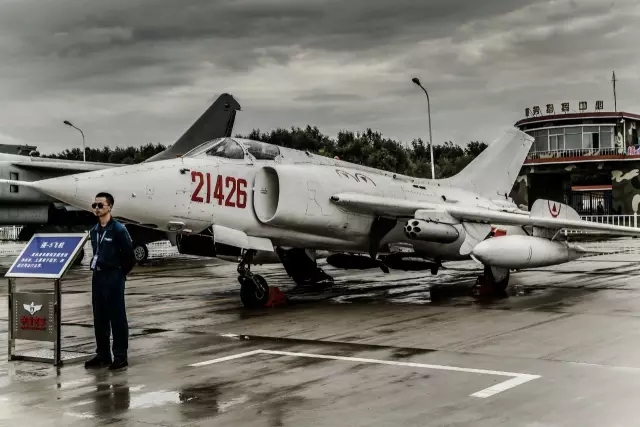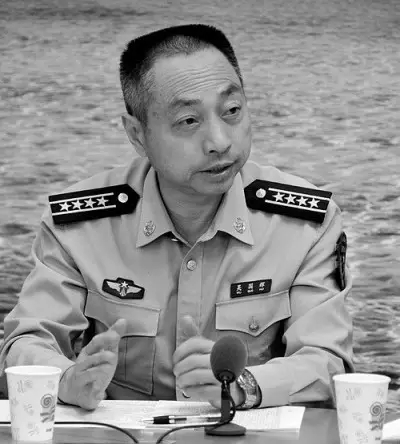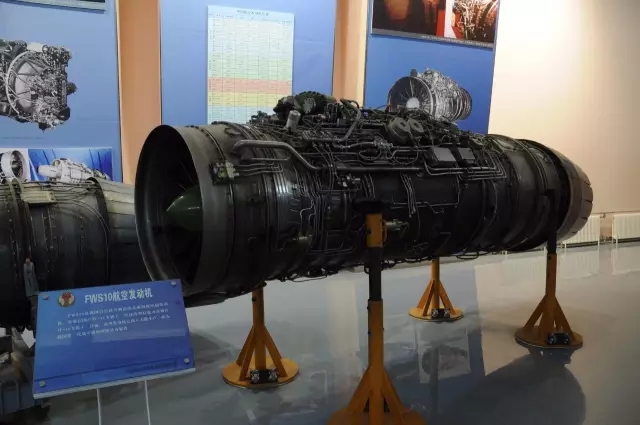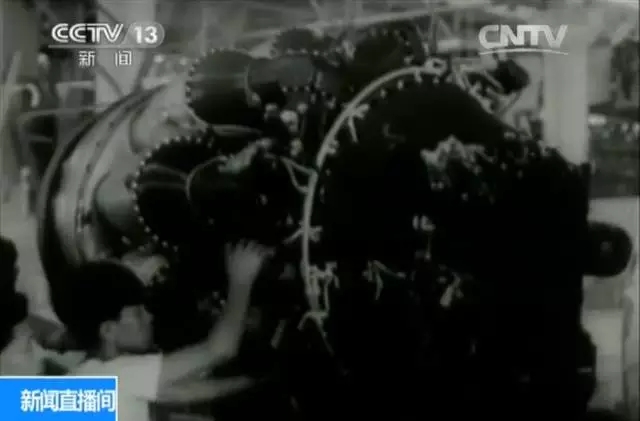All aircraft engines in China are imported? Super pilot tells you the inside story
CCTV News:As the "crown jewel" of modern industry, aero-engine has always been a "heart disease" of China aviation industry. With the establishment of China’s 12th military enterprise in Beijing, Chinese people have high hopes for this aero-engine enterprise, hoping that it can achieve the same achievements as "two bombs and one satellite".
Yesterday, the four-day air force aviation opening activity came to an end, and more than 20 military aircraft in the 34-type domestic weapons and equipment attracted national attention.

△ On September 2, 2016, the 2016 Changchun Aviation Open Day was held in the rain, in which a variety of air force active equipment such as H-6K, JL10, JL9 and Air Police 500 were unveiled.
At the same time, it also brings people cold thinking: what is the current localization ratio of the big country air force, which has a huge demand for aero-engine industry, and what level has it reached? How far are we from the aero-engine power?
Guogui Wu Decryption: Localization has gone through the process of introduction, imitation, improvement and innovation.
Guogui Wu, a 57-year-old special pilot of the Air Force, holds the rank of senior colonel. He used to be the captain of the Air Force Bayi Air Show Team and the deputy division commander of an Air Force Aviation Division, with 30 years of flying experience. As an old pilot with actual combat experience, and now a professor in the post-installation teaching and research department of National Defense University, he has unique insights in studying military high-tech, air force weapons and equipment, and equipment safety management.

At present, what kind of level is the localization ratio and performance of aero-engines in China? Guogui Wu said in an interview that China has established an independent aero-engine industrial system in the process of industrialization, and the performance of imitation engines reached a very high level in the 1960s and 1970s.Among the main combat aircraft, domestic engines have accounted for about 90%.
The so-called localization here refers to the process of introduction, imitation, improvement and innovation.Due to China’s weak industrial base, in order to meet the strong military demand for aero-engines, the Soviet Union’s aid and imported production methods were adopted. On the basis of the introduction and digestion of Soviet engine production technology, the model was improved, and the scale and serialization of domestic production were gradually realized, which basically met the needs of China’s air, land and sea aviation forces.
In the 1960s and 1970s, the overall performance of aero-engines produced in China was not much different from the mainstream level in the world at that time. The fundamental difference was that the domestic engines were mainly imitations and modifications, and there was no engine that was completely independently developed and produced.
"Not only do we have no independent intellectual property rights, but we also have no core technology." Guogui Wu said, therefore, in the 1980s and 1990s, when the aviation technology of the United States, Europe and Russia developed rapidly, and the third generation fighters were generally equipped with a new generation of turbofan engines, China was still "playing around" in the improvement of turbojet engines, hesitating on the road of introducing imitation and independent innovation, and the gap between China and the world’s advanced level was not large. Not only does the new generation of fighters lack the drive of advanced engines, but the engines in service also have some quality and safety hazards, which are called "heart disease" by Chinese people.
Only a few third-generation aircraft of the main fighter are equipped with imported engines.

△FWS10 aero-engine is an advanced aero-turbofan engine designed and manufactured by China. It is installed on the domestic J -11 aircraft and can also be installed on the J -10 aircraft after modification. Now it has been mass-produced. It has become an ideal device for the third generation fighter in China.
After 60 years of development, China has fighter planes, bombers, attack planes, transport planes and trainers.Systematize the aircraft production capacity of many types of aircraft. In line with this, a relatively complete engine development and production system has been established, which has the series development and production capacity of turboprop, turbojet, turbofan and turboshaft engines. Domestic engines are mainly assembled on fighter planes, fighter planes, bombers, fighter bombers and other main battle planes, and only a few third-generation fighters are equipped with imported engines.
For example, domestic fighters such as J -5, J -6, J -7 and J -8 are adapted to corresponding domestic engines such as turbojet -5, turbojet -6 and turbojet -7. With the improvement of stability, safety and reliability of Taihang engine, it has been widely installed on three generations of fighters, such as J -11, J -15 and J -16.
In terms of bombers, H -5 and H -6 realized the localization of engines. The turboprop engines used in Yun -7 and Yun -8 transport planes are all made in China.
With the maturity of integral technologies such as Zhi -9, Zhi -8 and Zhi -10, the serial development of turboshaft -8, turboshaft -6 and turboshaft -16 engines has been realized on the basis of introduction, which provides a reliable power source for the rapidly expanding domestic helicopter fleet in China.
At present, China’s aviation industry is in a stage from big to strong, from following up to catching up to developing on a par or even surpassing corners. Whether it is a new generation of military aircraft such as fighters, bombers, transport planes and drones, or large passenger planes and all kinds of general-purpose aircraft, there is an urgent need for strong and reliable driving of advanced engines. The sound and rapid development of aero-engines has become the proper meaning of the "Chinese Dream".
Guogui Wu said frankly that the country has clearly regarded the engine as a major scientific and technological project in the medium and long-term scientific and technological development plan, and has made up its mind to concentrate manpower, material resources and financial resources to independently research and develop a series of new engines. Domestic aero-engines have entered an unprecedented fast lane of development. In this context, the establishment of China Aviation Engine Group can be said to have a long way to go.

Development history of aero-engines in China
Stage 1: imitation and improvement
In 1950s, China aero-engine industry started from scratch and went through a road full of thorns. In 1956, China’s first turbojet -5 engine was successfully copied in Shenyang, and for a long time thereafter, China aero-engines were mainly copied and improved.

Even if it is copied, it is not easy. Even if there is no operation manual, it is difficult to disassemble the aero-engine correctly. For example, there are many small holes on the leaves of several square meters and centimeters, and the location of the small holes is very particular, which is determined according to the recorded trend.
Until 2002, when the domestic turbojet -14 "Kunlun" engine was finalized, China completed the whole process of self-development for the first time, and became the fifth aero-engine producer after the United States, Russia, Britain and France.
Stage 2: successful localization by purchasing patents.
The engine used in the flying leopard fighter is made in China and is called "Qinling", which is alsoIt is the first engine product in China that has been patented and successfully localized.
From introduction to localization, it has experienced 30 years of industrial upgrading. In 1972, China contacted Britain to discuss the introduction of the civil turbofan engine from rolls royce. In 1974, during the negotiation, to our surprise, China directly obtained the patent of Spey military engine, which was a top product at that time.
However, despite the patent, China’s new industrial materials and other technologies were too backward at that time. It was not until 2013 that this road of localization was completed, and it was equipped on the J-H -7 Flying Leopard fighter, and Flying Leopard became the only main fighter in China that completely got rid of its dependence on imported engines.
Stage 3: Own independent intellectual property rights.
In December 2005, turbofan -10, also known as "Taihang" engine, was successfully developed and became my engine.China’s first high-performance turbofan engine with independent intellectual property rights.
The road to research and development of Taihang engine is also quite difficult. During the test flight, more than 200 technical problems and failures occurred successively. After hard work, the "Taihang" engine was finally equipped on the J -15 fighter and successfully made its first flight in 2012. On a group of J -20 equipment exposed at the beginning of this year, some military fans found that a J -20 was also equipped with an improved Taihang engine. Some military experts said that the "Taihang" engine can be directly equipped on the fourth generation fighter, which laid a good foundation for continuing to develop more advanced, mature and reliable engines in the future.